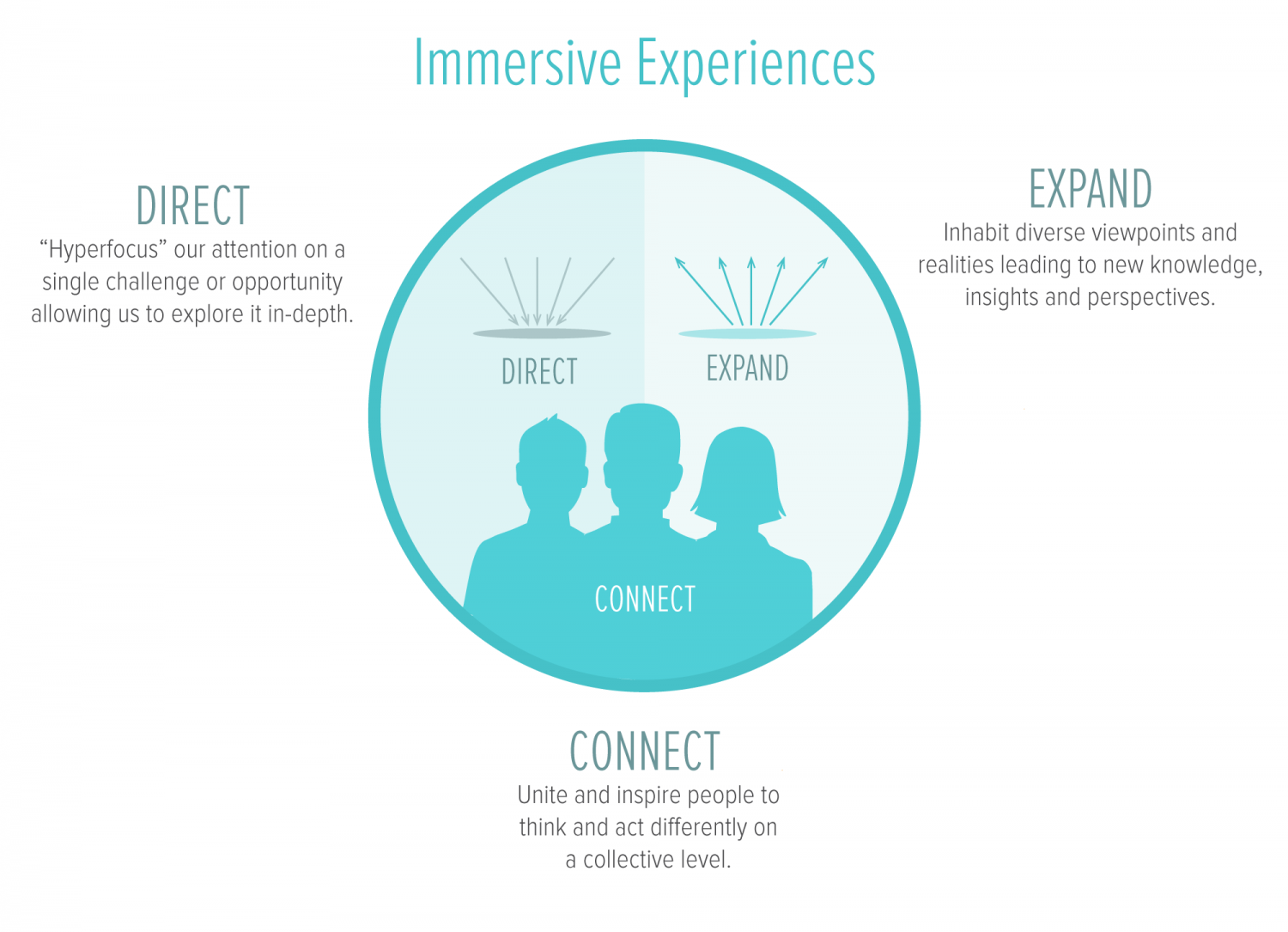Below is the first installment in our series, The Power of Immersive Experience, in which we will explore the key aspects of immersive experiences with the goal of understanding how they relate to building collective intent and spurring organizational change.
Our lives are shaped by the experiences that comprise them. Who would disagree? But when you actually think back over your life, you quickly realize that it’s not just any experiences that shape you. It is particular sorts of experiences. In many instances it is those experiences that are all-encompassing, thoroughly engaging, totally absorptive. In a word, immersive.
I recently interviewed a group of New York City-based students who had just completed a college-level study-away program in the woods of Maine. Rather than reading Henry David Thoreau in a climate controlled antiseptic classroom in the City, the students experienced this thinker while inhabiting the rugged New England landscapes that inspired his work. After canoeing five miles downriver and scaling the banks of a small Island at the mouth of the Atlantic, these students hunkered down, read and discussed Thoreau’s essays about nature, self-reliance, and the good life.
Students almost universally described the course as life-defining. They felt absolutely present to the ideas, they said, especially as the distractions of city life were removed: no cell phones, no laptops, no internet, no pop up ads, no honking horns. They described in detail the new perspectives they had gained and the deep relationships they had formed with fellow students. Without using the word, these students were describing an immersive experience: a time and place in which heightened focus is achieved, distractions and presuppositions fall away, and strong connections are formed between those who share the experience.
As facilitators of organizational transformation, we think a lot about immersive experiences and their ability to affect change. So, we are dedicating an entire blog series to this theme: The Power of Immersive Experience. With each new installment, we will explore insights on immersive experience gleaned from a range of disciplines. At the same time, we will stay focused on the three aspects of immersive experience that we believe to be essential to creating systems change within organizations. These aspects, as depicted in our model on Immersive Experience, are:
- The Power to Direct
- The Power to Expand
- The Power to Connect

The Power to Direct: An immersive experience has the power to direct our attention, overcome outside distraction, and attain a level of hyper-focus that is difficult to achieve in everyday life. Such hyper-focus allows us to explore solutions at a new level of depth.
The Power to Expand: It may sound counterintuitive, but immersive experiences have the ability both to direct our attention on a singular question and to expand our understanding and perspective to be more inclusive. In fact, this relationship is complimentary: we are directed away from distraction, ushered into a place of honed reflection, so that we can broaden our understanding, alter our perceptions, and find more creative solutions.
The Power to Connect: Perhaps nothing bonds people together more than shared experience, especially transformative experience. Our work has given us much fodder for thinking about the power of shared immersive experiences to transform thinking and unite people into groups who are committed to a common vision.
I’ve seen the power of immersive experience in the lives of the students in the wood of Maine. And, at Collective Next, we’ve seen the fruit of immersive experience in our sessions, but we still have questions we want to explore: how does one go about creating the conditions in which maximally immersive experience can occur? What obstacles—psychological, organization, personal—stand in the way of groups and individuals entering fully into an immersive experience? How can the power of an immersive experience best be directed toward specific ends? How can organizations harness the power of immersive experience to create buy-in and common cause? What are the most fruitful ways to carry the benefits attained during an immersive experience back into everyday life and work?
These and many more questions will be taken up in our blog series The Power of Immersive Experience. Join the conversation.
Back



